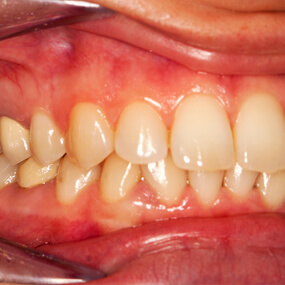Crowns vs. Veneers: Which Is the Right Option for You?

Dental veneers and dental crowns are both proven and refined options for dental restorations. They can restore function, protect the underlying tooth, and improve smile aesthetics. There are, however, some important distinctions between the two options that you will want to consider.
Dental Veneers: Ideal for Correcting Minor Cosmetic Issues
Dental veneers, which are often made from porcelain, are wafer-thin facades that are bonded to the front of teeth. Veneers can alter the color of a tooth, change its shape, and even extend far enough to close gaps. If a tooth has visible wear and tear but is fundamentally sound, then a veneer is an excellent choice to enhance the appearance while also protecting the tooth from further wear.
A veneer is a conservative restoration option in that the natural tooth requires little to no alteration prior to installation. A dentist must generally remove a thin layer of enamel from your tooth in order to achieve a perfect fit. The veneer simply takes the place of the enamel layer removed, and so, your tooth has no additional thickness or weight beyond what you are seeking to achieve. This makes veneers the most popular choice to fix crooked teeth as well as stained teeth that cannot be whitened.
Dental Crowns: Better Suited to Advanced Restorations
A dental crown is a prosthetic tooth that is custom-made based on the individual smile. That crown is then placed over a damaged tooth in order to protect it. There is typically more preparation required for a crown compared to a veneer. The dentist must often remove enamel but may also have to shape the natural tooth and even reinforce it structurally. Once the natural tooth is prepared, the crown is secured. This restores appearance and function while also protecting it from further damage.
Dental crowns are made from durable materials, such as porcelain and composite resin. The prosthetic must be able to withstand the forces created when you bite and chew. Once a crown is attached, it is part of the tooth and can be used naturally; although, the surrounding tissue may be sensitive for a brief healing period. Since crowns required advanced preparation, dentists typically recommend them when a tooth is very damaged or requires structural support or after root canal treatment.
Crowns vs. Veneers: Maintenance
A porcelain veneer that is well-maintained can last between seven and 15 years. A veneer and its bond are strong, but a veneer is also brittle and will wear over time. Dental crowns typically last 15 years but can last as long as 25 with proper care. Crowns are subject to natural wear and tear as well, and both crowns and veneers can chip, crack and otherwise break if you are not careful with them.
After having a veneer or crown installed, it is important to continue seeing your dentist every six months—or more frequently if your dentist advises it. During a regular checkup, your dentist will clean and examine your restorations along with your teeth. Any issues can be diagnosed early on and corrected prior to serious damage occurring, which can maximize the restoration lifespan. At home, you just need to continue brushing and flossing as you do with your natural teeth.
Restore Your Smile
Porcelain veneers and dental crowns are among the most successful and cost-effective ways to restore both beauty and function to your smile. Jeffrey D. Clark, DDS, is among the premier dentists in Arizona and has helped many patients enjoy better oral health and more beautiful smiles with veneers and same-day crowns. If you think that you may need a veneer or crown, schedule a consultation with Dr. Clark. You can call Scottsdale Cosmetic Dentistry Excellence at 480 585 1853 to make that appointment.




